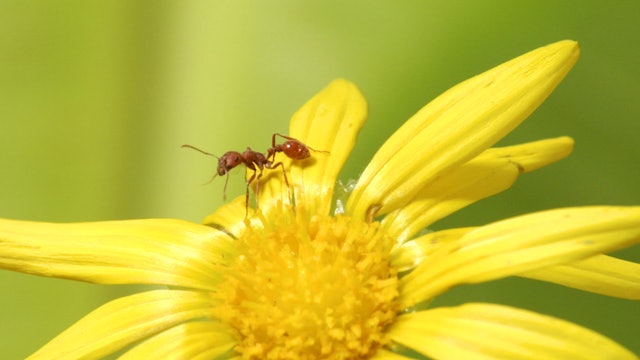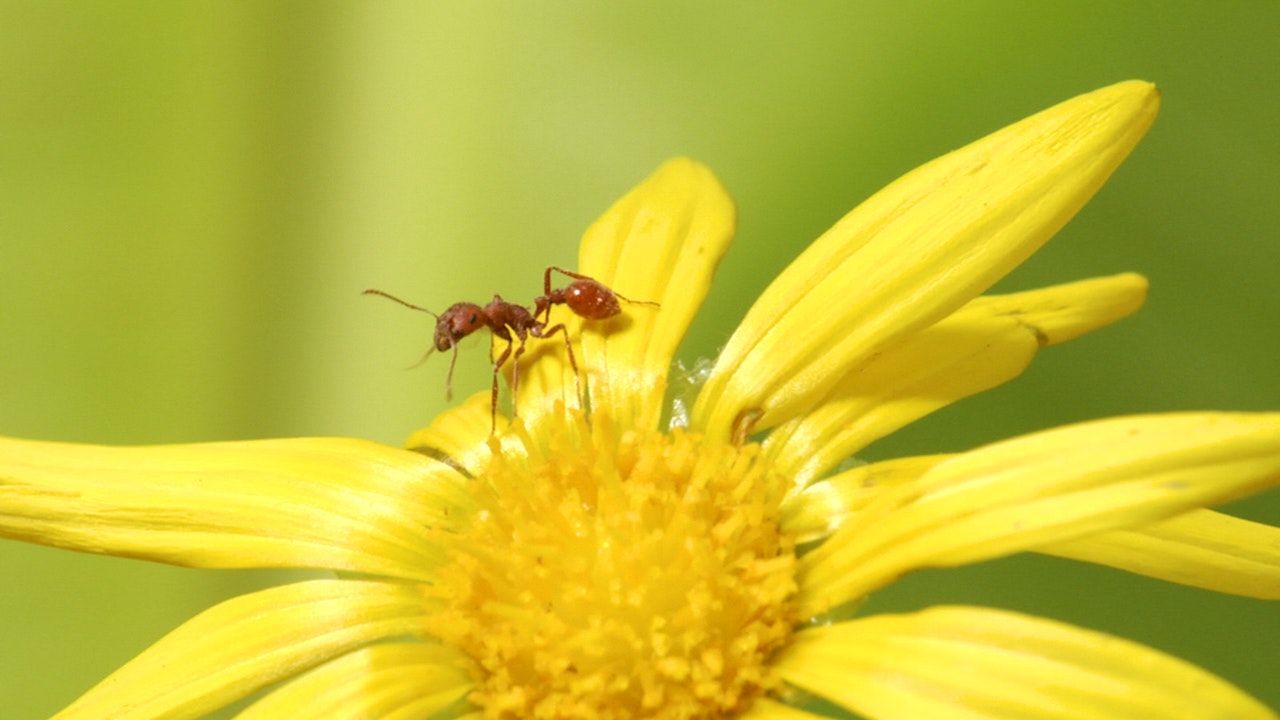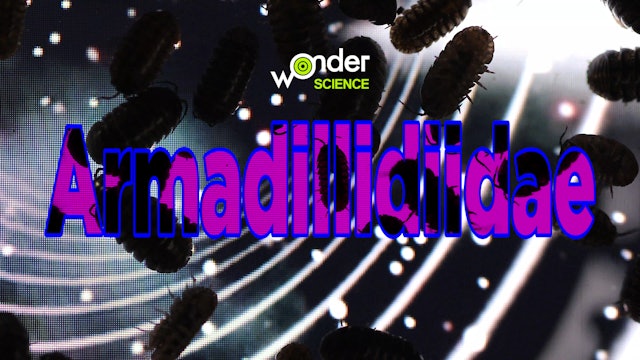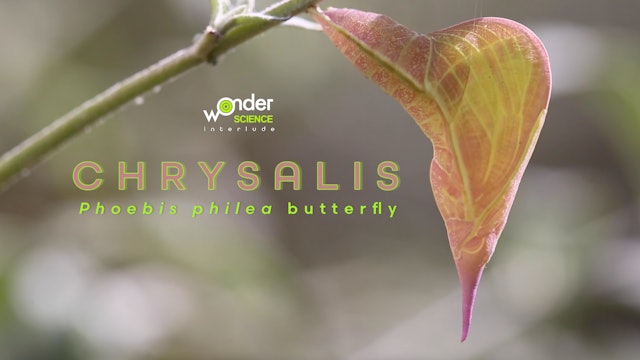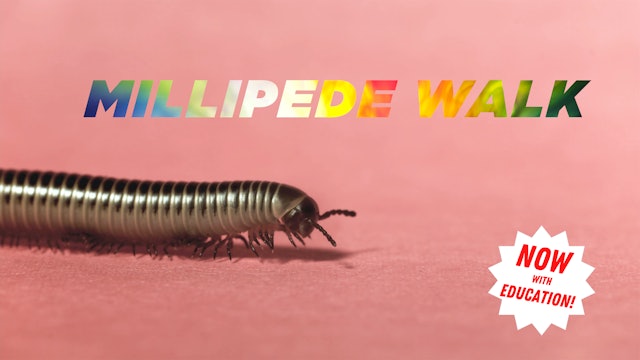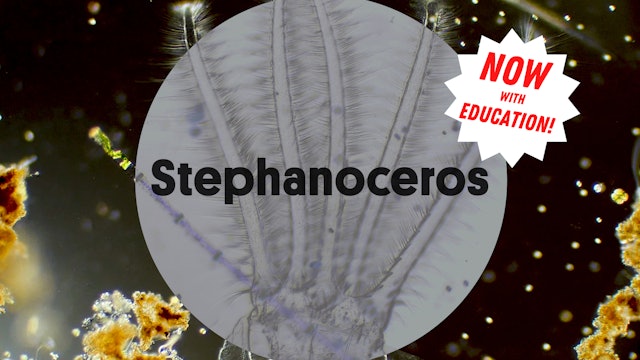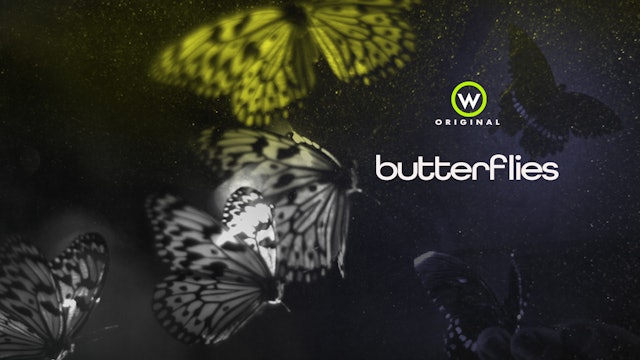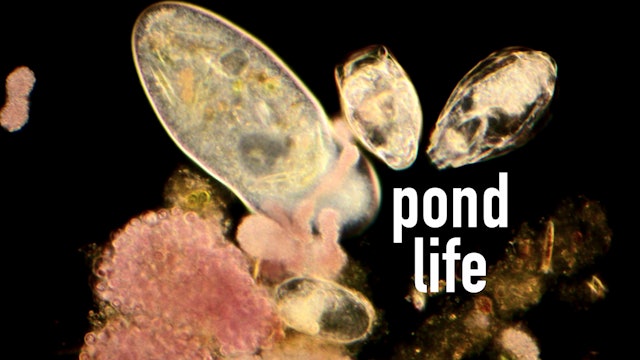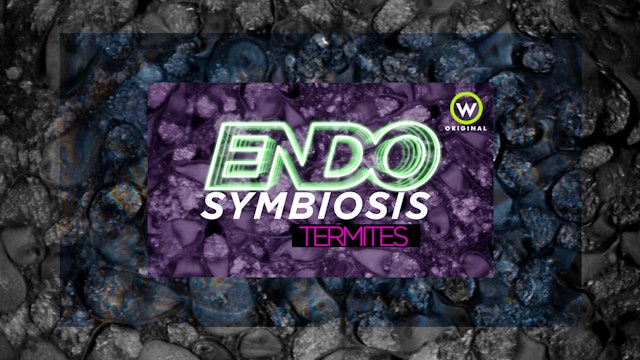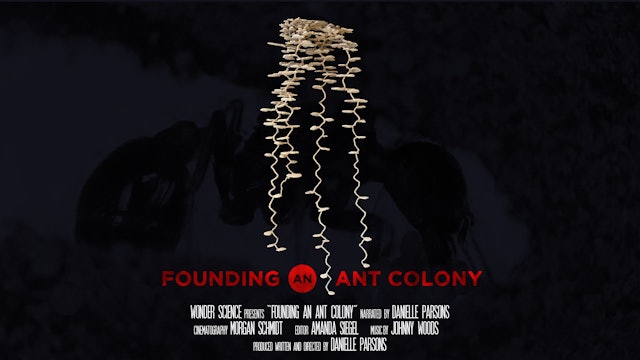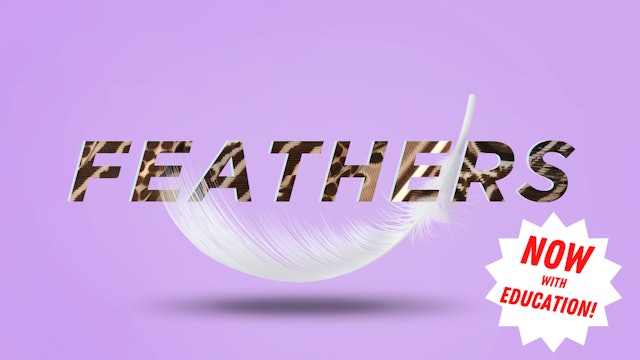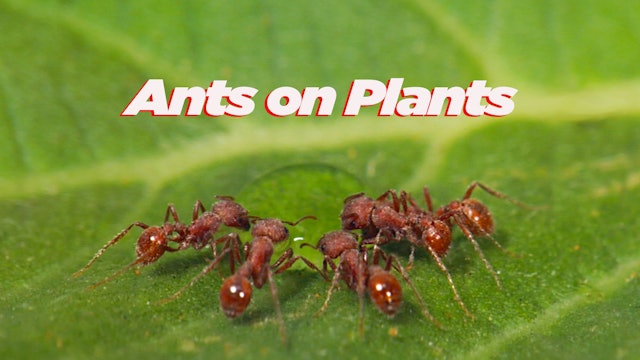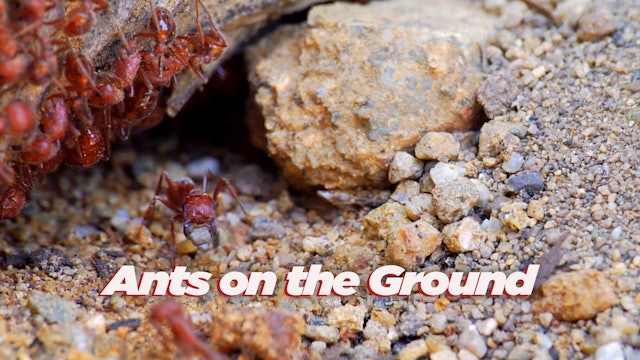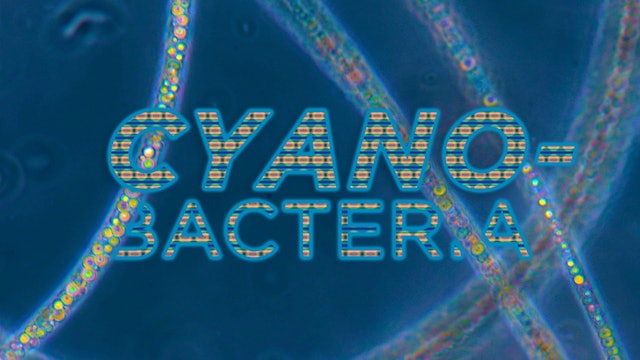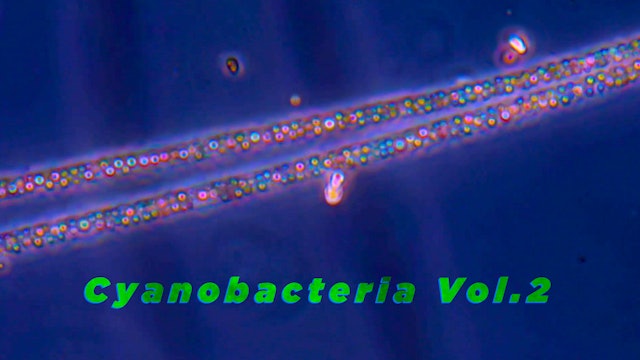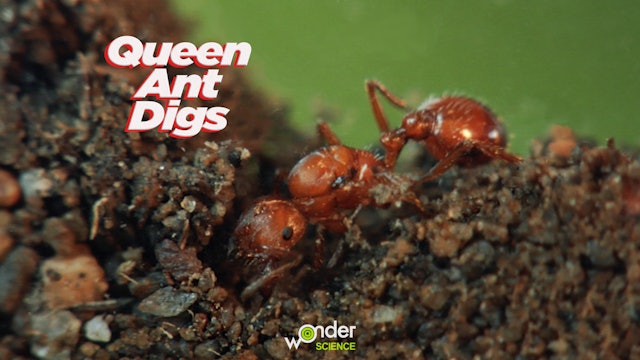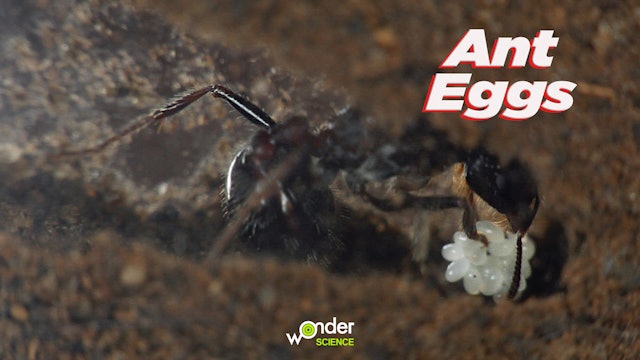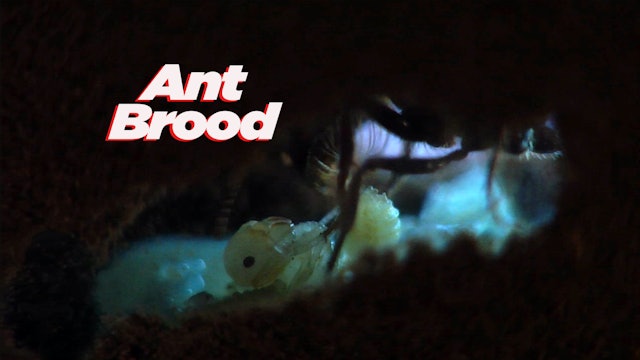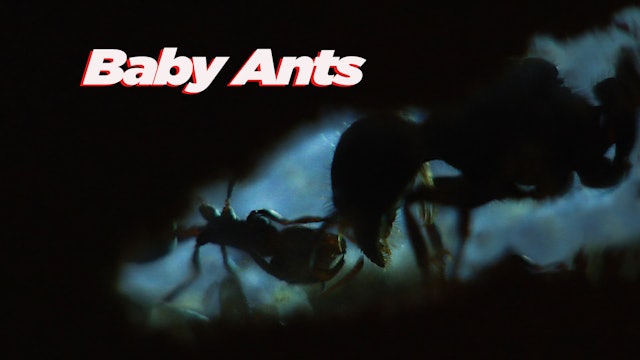Living Beings
Wonder at the science of life -- the behavior, anatomy, and general existence of every living thing that creeps, crawls, flies, or oozes. Encounter a menagerie of living wonders unlike any you’ll find at the zoo. Discover the world's smallest animals, marvel at a butterfly's wings in slow-motion, and visit with exquisite microscopic organisms living their best lives.
-
Armadillidiidae
Life can feel so overwhelming at times, you just want to curl up into a ball and shut everything out. That's what these Isopods do, thanks to their segmented body structure. The animal curls its body up into a ball, drawing its antennae inside to form an uninterrupted sphere. Zoologists call the ...
-
Millipede Walk | narrated
Millipedes have the most legs of any animal. The distinctive traveling wave in its walk is a kind of auto-pilot. Using innovative slow-motion macro video, we observe the traveling wave motion of the legs move from the back to the front of the animal's long body. The workings of the walk involve a...
-
Stephanoceros | narrated
Meet a tiny 1000-celled animal living among single-cell organisms. Rotifers are among Earth's smallest animals, and even though this Stephanoceros is a giant rotifer, it is still barely visible to the unaided eye. Beautifully captured in award-winning video microscopy by Tom Jones. Original music...
-
Butterflies
Float along with colorful butterflies filmed in macro slow-motion. Featuring macro slow-motion video and thermal imaging, this program was made with the participation of the Natural History Museum of Los Angeles, as well as contributions of bio-mimetics footage and thermal imaging animations from...
-
Pond Life
Under the surface of a freshwater pond, microscopic organisms graze on shimmering reefs of photosynthesizing algae and bacteria. Explore a jewel-like aquatic realm, home to single-celled ciliates like Euplotes, Coleps, and Paramecia, as well as miniscule animals called Rotifers. Created in collab...
-
Pretend You're a Leaf
Swirling green energy factories capture the energy of sunlight, thus enabling life on earth. Cytoplasmic streaming inside plant cells is very efficient -- the slow turning of each round chloroplast means every square micron gets a chance to create energy and oxygen from sunlight. Here, we're able...
-
Endosymbiosis
Encounter hundreds of species of microbe that exist nowhere else on the planet outside of a termite's gut. These microbes enable their termite host to digest the wood it infamously devours. The termite and these microbes share what is called an obligate endosymbiotic relationship. That is, neithe...
-
Founding an Ant Colony | Narrated
Only a few will be Queen. Discover what it takes to start a new ant colony in this rare visit inside a founding queen's underground brood chamber.
-
Feathers | narrated
Ornithologist Richard Prum shares his knowledge of the natural math of feather patterning. Simple feather patterns can be predicted using mathematical models called Turing reaction-diffusion equations. As a feather grows, each new cell must decide whether it will receive pigment or not, depending...
-
Ants on Flowers
Harvester ants search a lovely variety of flowers for nectar and water. Ants are attracted to sweet foods (as well as fatty), and these are on the lookout for flower nectar, along with hydration from giant water droplets. This program was made with assistance from Les Greenberg and the University...
-
Ants on Plants
Harvester ants climbing on plants, drinking from giant water droplets, and foraging for food. Ant colony members are constantly communicating with one another through their chemical language of pheromones, as well as tactile cues and even moving air molecules. To be able to drink the water, the a...
-
Ants on the Ground
Recording the anthill in its splendor of minute sprawling activities. A colony of Harvester ants patrols the ground, on-duty and at rest. An ant colony is optimized for efficiency, but that doesn't mean that all ants are working all the time. In fact, having a surplus of members is an important f...
-
Cyanobacteria
Over a billion years ago, tiny jewel-like cyanobacteria oxygenated earth's atmosphere. These single-cell organisms are the reason we have air to breathe. Cyanobacteria are also believed to be the precursors responsible for photosynthesis and multicellularity as a whole. Cyanobacteria are found in...
-
Cyanobacteria Vol.2
Cyanobacteria oxygenated Earth's atmosphere billions of years ago, allowing oxygen-using creatures to evolve. Cyanobacteria are also credited with devising photosynthesis and multicellularity. Today they provide 20% of Earth's oxygen. These photosynthesizing bacteria are found in many environment...
-
Queen Ant Digs
A recently-mated ant queen digs a tunnel underground in a vigorous attempt to start a new colony. Only 2% of ant queens successfully found new colonies. The initial challenge is to select a suitable location for the new colony. Next, a newly-mated queen ant must dig down into the ground, where sh...
-
Ant Eggs
The history of every ant colony traces back to the founding queen's first clutch of eggs. The queen patiently and attentively tends them while they develop into the subsequent immature life stages. The ant queen holds the eggs, stimulating them with touch. She must keep the eggs clean and safe fr...
-
Ant Brood
Rare vantage of a new ant queen raising her first batch of brood through the immature life stages. Before it becomes an ant, an egg develops through three immature life stages. The 1st stage is egg, the 2nd is larvae, and the 3d is pupae. The queen constantly cleans her brood which protects them ...
-
Baby Ants
The first generation of ants raised by a new ant queen are called minims, and they are smaller than subsequent generations of ants. Right off the bat, the young female ants will tend the developing brood and venture above ground to find food to bring back to the queen and other colony members. Ov...

